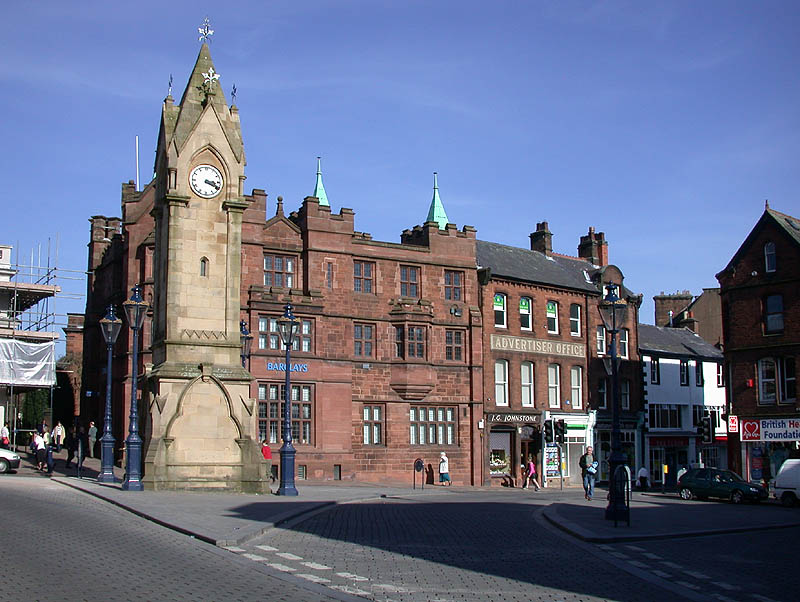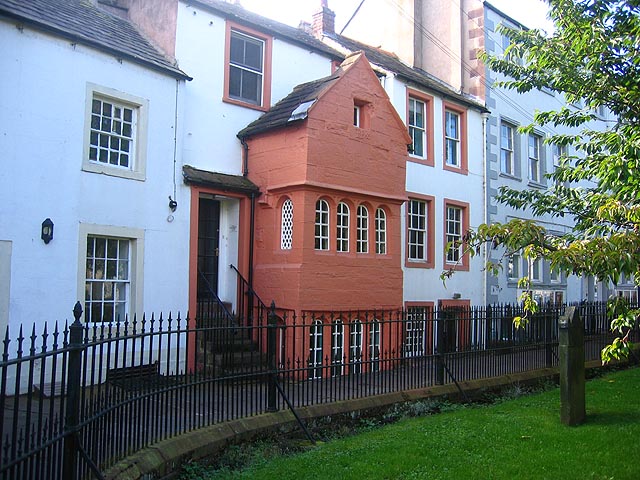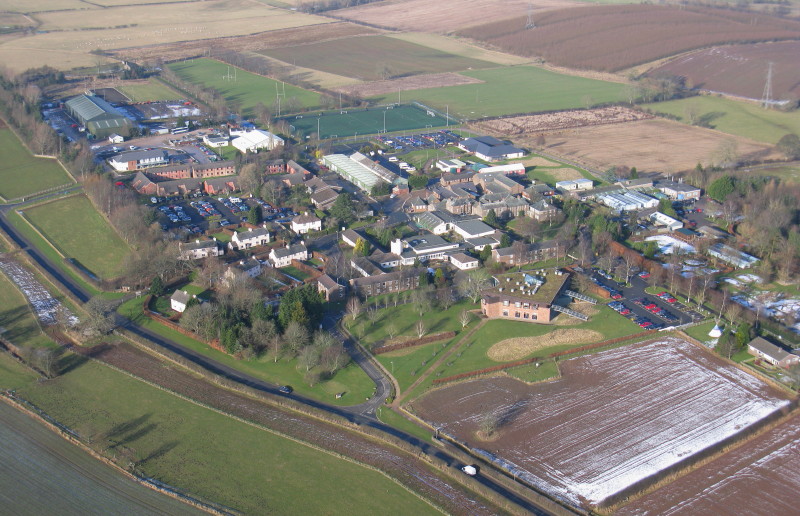
|

Clock tower erected 1861 to commemorate Philip Musgrave of Edenhall.
Penrith is a large town acting as a regional centre for the eastern Lake District, lying just outside the National Park. Its position on the strategic route to and from Scotland has resulted, since Roman times, in its development as a military centre.
Penrith was once the capital of Cumbria. The attractive town is the hub of the Eden Valley. It is an important shopping centre, with a good mix of traditional shops and sophisticated arcades. Leading off Penrith's main streets are many old yard entrances with interesting inscriptions on the lintels.

Penrith has a rich history. It was in the 9th and 10th centuries that the town became the capital of Cumbria - a semi-dependent state which, until 1070 AD formed part of the Kingdom of Scotland and Strathclyde. The two oldest streets, Burrowgate and Sandgate, date from the 13th Century.
The imposing ruins of Penrith Castle have an intriguing history. It was begun in 1399, when a stone wall was added to an earlier pele tower. The castle was improved and added to over the next 70 years, becoming a royal fortress for Richard, Duke of Gloucester. The Normans built Brougham Castle, and a substantial part of the castle remains today.
A legendary giant and King of All Cumbria, is said to be buried in the giant's grave in St Andrew's Churchyard. The four hogback stones surrounding the grave are said to represent wild boar he killed in nearby Inglewood Forest.


The centre of Penrith, with the clock tower and St Andrew's Church.

The M6 in the foreground, the West Coast main line across the centre,
and Beacon Hill top left.
William and Dorothy Wordsworth and Mary Hutchinson (later William's wife), attended the Dame Anne Birkett School, which overlooks St Andrew's Church.

The Dame Anne Birkett School
The Penrith Museum and Tourist Information Centre are housed in the former Robinson's School, an Elizabethan building which was altered in 1670 and used as a school until the early 1970's. The recently refurbished museum covers the history, geology and archaeology of the Penrith area.
High above the town, on top of Beacon Hill, is Penrith Beacon, a monument built in 1719, on a spot where beacons have been lit in times of war and emergency since the time of Henry VIII. You can walk up to the beacon, and from there get a magnificent view on a clear day across the Eden Valley to the hills of Lakeland.
Penrith railway station is close to the centre of Penrith, and directly opposite the ruins of Penrith Castle.

Penrith, looking north east from the M6. Cross Fell top centre.

Skirsgill Hall, with the Penrith market top right

A short distance from Penrith is the University of Cumbria Faculty of Science and Natural Resources at Newton Rigg :

Aerial photos by Simon Ledingham.
Local Churches :
Related Links :
- Wikipedia - Penrith
- Open Directory - Penrith
Go to Menu :
